
PCDL @ OSU
I am recruiting graduate students for Fall 2026 through both the cognitive and developmental areas at Ohio State. If you are interested in spatial cognition, visual perception, and/or mental representation -- please reach out! I'd love to hear from you.
www.cogdevlab.org
15.09.2025 17:56 — 👍 32 🔁 17 💬 0 📌 1

Can we “see” value? Spatiotopic “visual” adaptation to an imperceptible dimension
In much recent philosophy of mind and cognitive science, repulsive adaptation effects are considered a litmus test — a crucial marker, that distinguis…
Visual adaptation is viewed as a test of whether a feature is represented by the visual system.
In a new paper, Sam Clarke and I push the limits of this test. We show spatially selective, putatively "visual" adaptation to a clearly non-visual dimension: Value!
www.sciencedirect.com/science/arti...
28.08.2025 20:18 — 👍 40 🔁 15 💬 2 📌 1
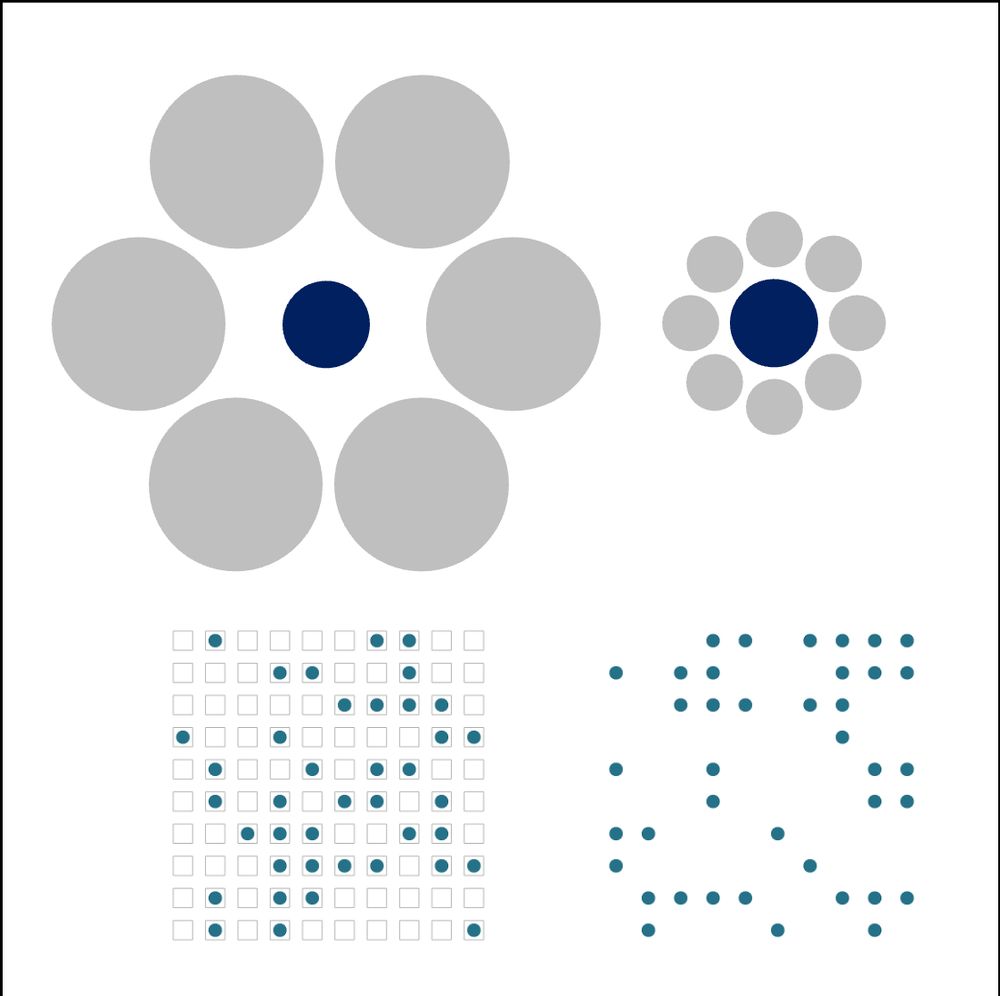
These results have broader implications for the ways in which we perceive number. Perhaps our perception of number isn’t absolute, but relative — constructed in relation to other numerical information. Kind of like a numerical “Ebbinghaus illusion”.
26.06.2025 16:14 — 👍 0 🔁 0 💬 0 📌 0
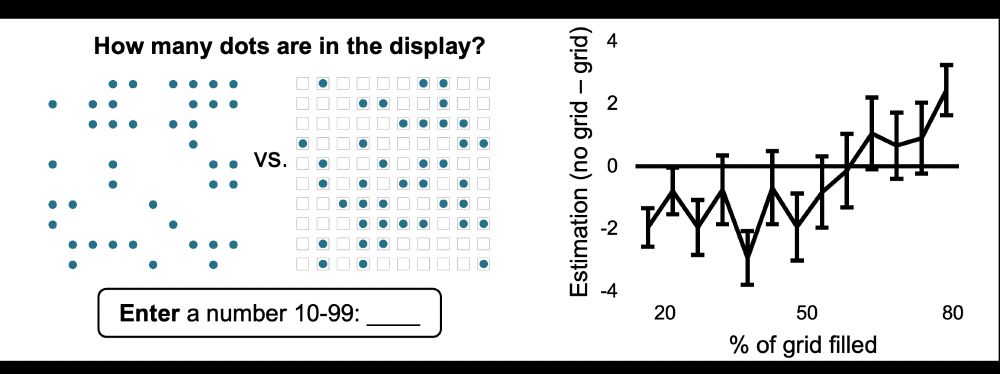
Interestingly, it seems that the distortion of numbers we found in the previous experiments was correlated with the proportion of the grid filled by the dots. When grid occupancy was low, people underestimated, and when the grid occupancy was high, people overestimated.
26.06.2025 16:14 — 👍 1 🔁 0 💬 2 📌 0
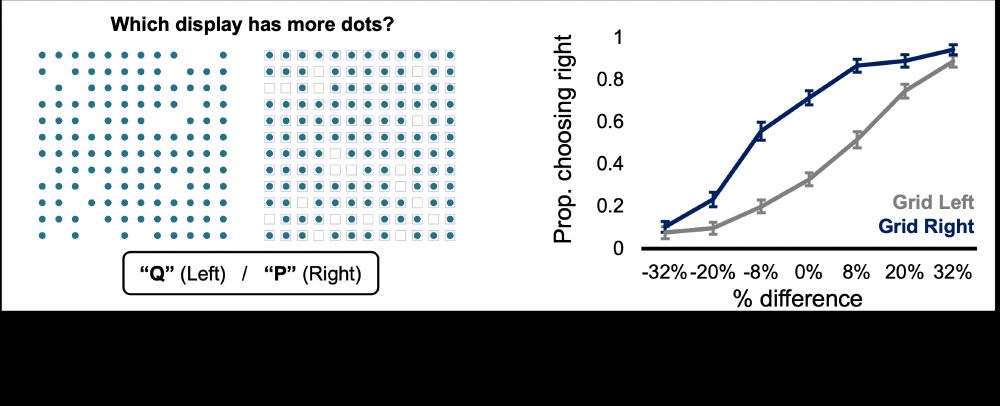
We wanted to see whether these underestimation effects persisted no matter the occupancy of the grid. Much to our surprise, however, we found something even more interesting: When the grids were more than 50% full, people tended to overestimate the number of dots in the display.
26.06.2025 16:14 — 👍 0 🔁 0 💬 1 📌 0
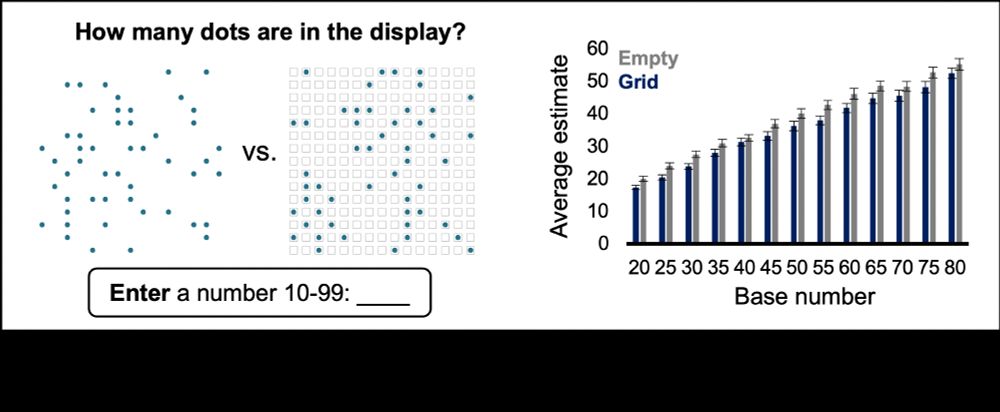
In a standard comparison task and estimation task paradigm, we found that people tended to underestimate the number of dots in displays with a grid-like pattern of boxes (just like you may have seen above). So what’s going on here?
26.06.2025 16:14 — 👍 0 🔁 0 💬 1 📌 0
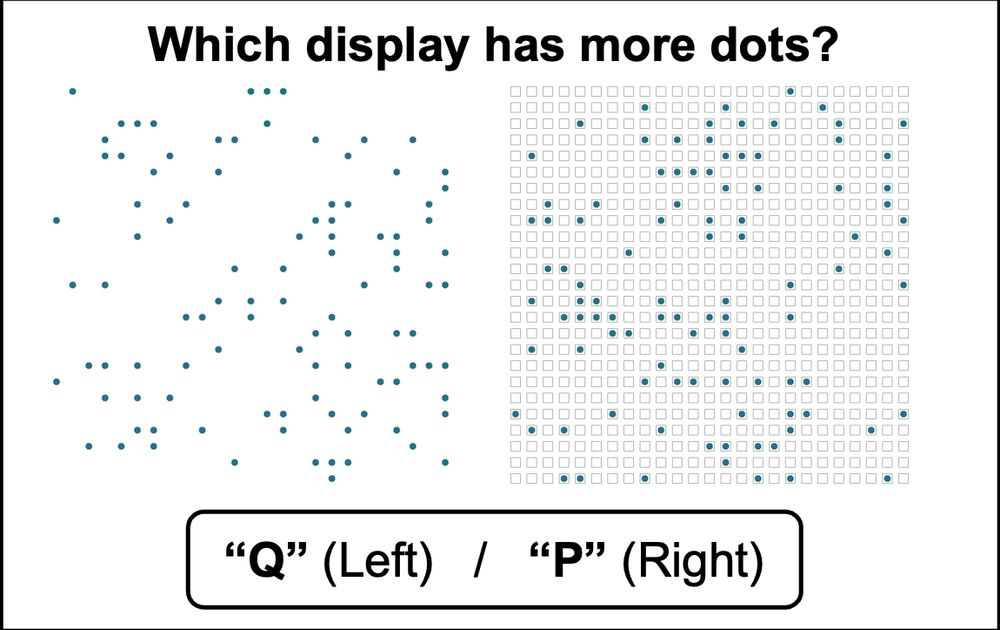
Here’s the basic effect. You see two displays of dots. Which has more? If you’re like most people, you’d say the left, but in fact they are the same.
26.06.2025 16:14 — 👍 1 🔁 1 💬 1 📌 0
OSF
I am excited to announce my first ever paper (w/ @samiyousif.bsky.social ) about a new illusion of *number*: the “Crowd Size Illusion”. osf.io/preprints/ps...
26.06.2025 16:14 — 👍 29 🔁 10 💬 2 📌 3
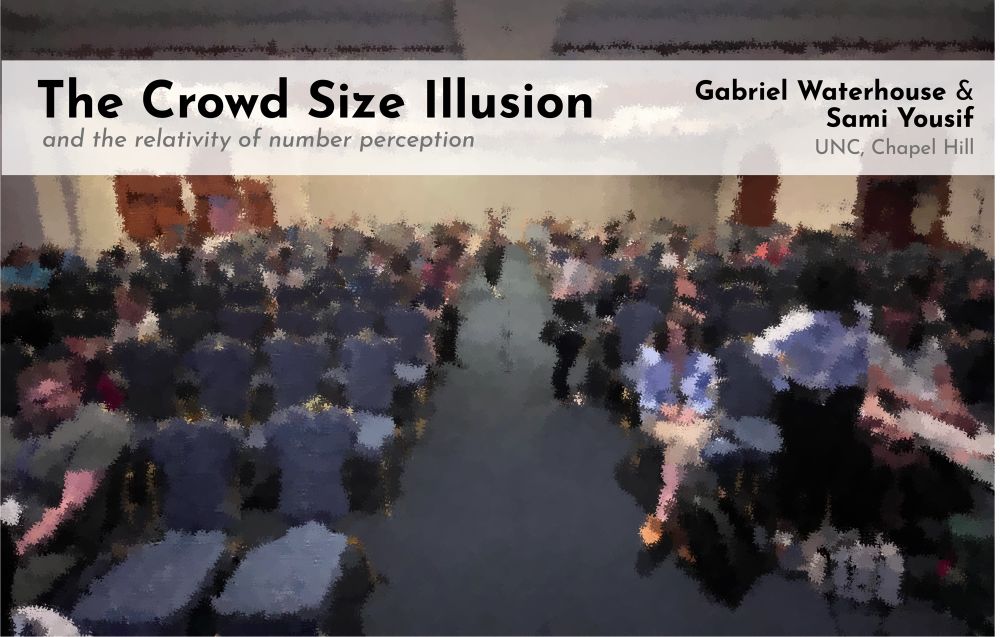
I am very excited to be presenting my work with @samiyousif.bsky.social at #VSS2025 tomorrow! I will be talking about a new illusion of number perception that we call the “Crowd Size Illusion”!
18.05.2025 00:01 — 👍 7 🔁 1 💬 0 📌 1
Historian @UNC-Chapel Hill. Works on culture and politics of business, especially in modern U.S.
Newest book: One Day I'll Work for Myself: The Dream and Delusion that Conquered America
Director of the Vision Learning and Development Lab at Temple University.
Interested in cognition, computation, neuroscience, and development.
https://vlad-lab.com/
Cognitive scientist studying how we see + think @ Johns Hopkins University. 🇨🇦
Lab: https://perception.jhu.edu/
psychology phd student @ johns hopkins | cognitive development & explanation
Assistant Professor at Ohio State studying how we remember what we learn + how we learn from our memories
www.momentslab.org
third-year phd student at jhu psych | perception + cognition
https://talboger.github.io/
Join us for #VSS2025, May 16-20, 2025 in St. Pete Beach, Florida.
Asst Prof @ Ohio State. I study how we perceive and represent the (spatial) world. More here: cogdevlab.org
official Bluesky account (check username👆)
Bugs, feature requests, feedback: support@bsky.app







